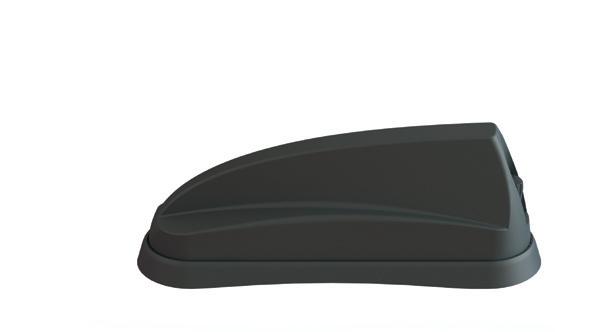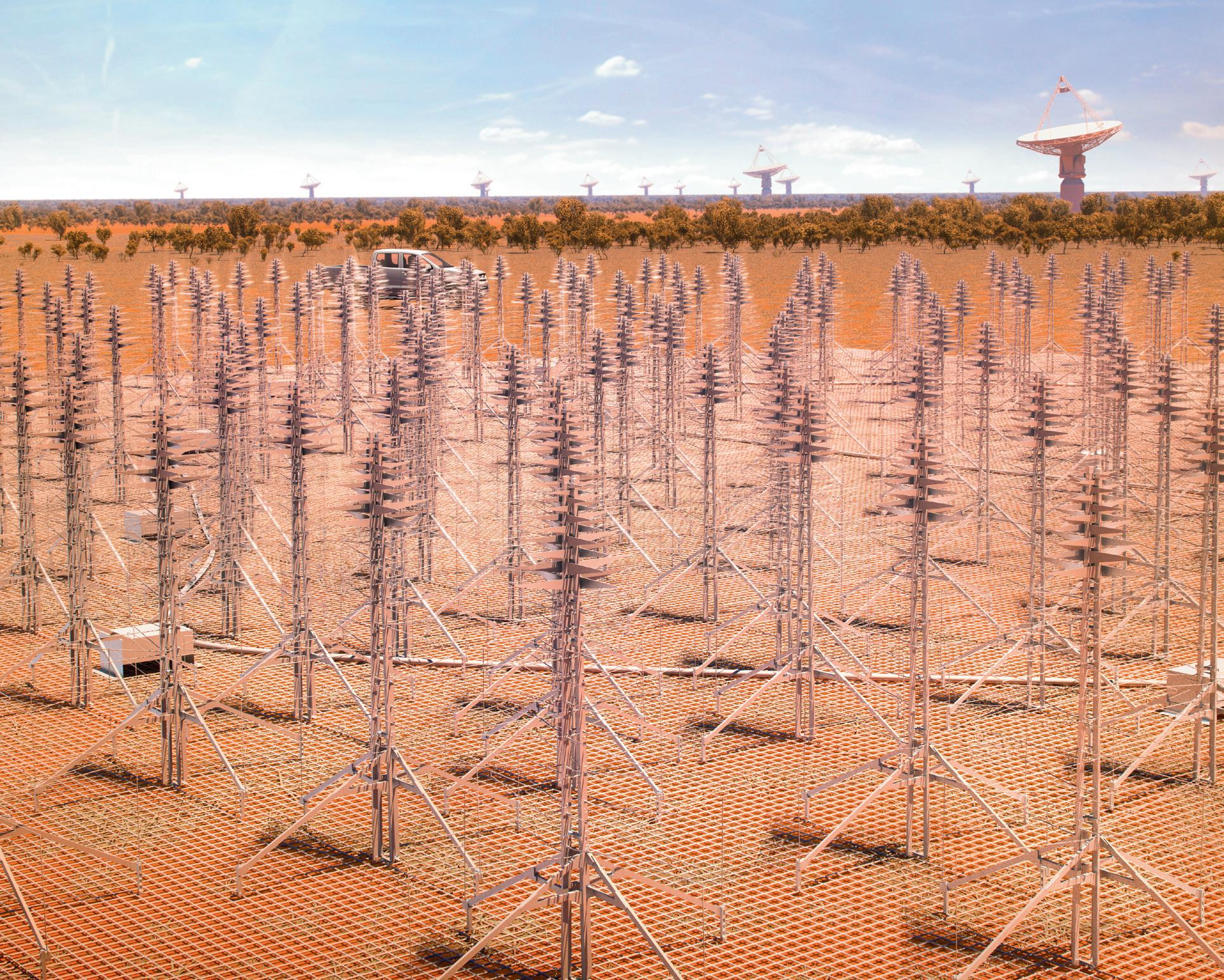
6 minute read
US research prototype — bringing LMR to LTE in a simple system
©stock.adobe.com/au/Семен Саливанчук
US RESEARCH PROTOTYPE
BRINGING LMR TO LTE IN A SIMPLE SYSTEM
The goal is to allow handheld radios to utilise the LTE networks.
Engineers at the US National Institute of Standards and Technology (NIST) have built a low-cost computer system they claim connects older public safety radios with the latest wireless communications networks, showing how first responders might easily take advantage of broadband technology offering voice, text, instant messages, video and data capabilities. NIST’s prototype system could help overcome a major barrier to upgrading public safety communications. Many of the 4.6 million US public safety personnel still use traditional analog radios, due to the high cost of switching to digital mobile phones and these systems’ slow incorporation of older ‘push to talk’ features that are both familiar and critical to first responders.
The prototype connects analog land mobile radio (LMR) handsets and towers with a long-term evolution (LTE), the most widespread wireless standard, server that handles operations inside a broadband network. The LTE system is known as mission-critical push-to-talk, which refers to essential aspects of public safety radios such as high availability and reliability, speaker identification, emergency calling and clear audio quality.
It uses software instead of hardware to enable flexible frequency selection and interface designs, which interact with the LMR signal interfaces and feeds that data into the next unit. An open-source software environment for managing software radio handles digital signal processing. A user interface for LTE handsets allows LMR radio users to talk to LTE network users like they are both on the same push-to-talk network, with calls initiated from either side.
Goals include robustness, low cost and close conformance to existing and future standards. The physical equipment includes computer hardware that runs all three components, suitable software and an antenna. The computer must have an internet connection to the LTE system. The entire set-up is about the size of a video game console plus a laptop or desktop computer.
The NIST system costs less than existing US industry and government efforts to bridge radio and mobile phone networks. To promote technology transfer, they intend to publicly release all capabilities on an open source basis for use by anyone.

CASE
STUDY DAMM systems set to monitor India’s Pune Metro rail network
Equipment from DAMM Cellular Systems, and partner Consort Digital, has been selected for an Indian metro rail project in Pune.
Once operational at the end of 2021, Pune Metro will have a capacity of 1000+ riders per train, which will run along a combination of underground and elevated tracks. The service will run 19 hours a day and is expected to serve more than 600,000 passengers a day. The solution consists of a combination of DAMM indoor systems, Consort Digital train radio systems and Sepura TETRA handheld and mobile radios. It will be used to provide radio communication for two lines covering nearly 33 km of tracks, 34 cabs, 29 stations and two depots.
The DAMM Indoor System is designed to ensure sufficient coverage for the entire railway, above and below ground, while the distributed architecture, open API and modular configuration provide a customised solution to meet customer’s needs.
Due to an insufficient infrastructure, resulting in average commute times above 100 minutes a day using public transport, the city saw a significant rise in the number of people driving into the city instead. To address this issue, it was decided to strengthen the city’s infrastructure with a new reliable metro rail line. Apart from an estimated 75% reduction in travel time, Pune Metro will lead to improved air quality, less consumption of fossil fuels and fewer road accidents.

Pune Metro
Antenna

Panorama Antennas has expanded its Sharkee antenna range with a 5G, LTE-ready, combination antenna solution.
The 5G MiMo Sharkee antenna offers 2x2 ultra-wideband 617–960/1710–6000 MHz cellular antenna elements, covering all 5G LTE spectrum frequencies worldwide; including LTE Band 71 (617-698 MHz), which is now used in the US as a frequency band for 5G LTE communications.
The MiMo Sharkee 5G also adopts up to 4x4 MiMo dual-band Wi-Fi, covering 2.4 GHz and 5.0–7.1 GHz bands using GPS/GNSS technology with band noise filtering. A version is available which allows for an external whip; therefore allowing for VHF or UHF voice radio communication to be used through the single antenna or AM/FM radio function.
The 5G MiMo Sharkee enables all communication functions to be performed by a single antenna with a single hole-mount installation on the vehicle roof. It is designed to fit within the roof rib lines on all major vehicle manufacturers or can be installed in place of the existing roof antenna on most vehicles. The MiMo Sharkee has also been developed with advanced 5G LTE vehicle router technology in mind. It allows for a single antenna solution to align to a single vehicle cellular router for easier procurement and installation process.
The antenna is suitable for harsh conditions and offers an IP66 rating, making the antenna weatherproof and waterproof. The wideband cellular antenna elements offer >12 dB isolation between 5 and 9 dBi peak gain. The Wi-Fi elements are also WiFi 6 ready for the latest technology. The antenna also features UN118 compliant cable assemblies, requested by the automotive vehicle sector.
The Sharkfin antenna is designed for regular police fleet vehicle or covert operations. Other emergency service and frontline vehicle fleets would also benefit. It is suitable for mass transit buses and coaches as well as any utility fleet where connectivity is important.
Panorama Antennas Ltd
www.panorama-antennas.com

CASE
STUDY Valen Power provides energy storage for remote sites


Valen Power was engaged in 2020 by a state rail provider to support them in an energy storage solution for remote radio sites.
Scope and challenges
The client wanted to expand its existing radio network; however, there was no access to mains power at several of the proposed radio network sites. This meant the client needed to look for a reliable off-grid energy solution.
The preference was a system without ground penetration to minimise the installation time required onsite. Additional space also needed to be factored in to give Valen Power’s client the ability to add to the system as the need expanded. The client had a number of these sites, all with slightly different load profiles, so each site needed individual consideration to get the best outcome. Final installation.
Solution
Valen went to the drawing board bearing in mind the client’s expectations and designed three different modular systems to cover the requirements of the various site load profiles.
As the client required site installation time to be minimised, the Valen Design Team came up with a complete package including all components, from pre-cast footings, solar frame, panels that could be installed by one person safely, lithium batteries, solar regulator, DC distribution panel and enclosure.
Components were all pre-assembled where feasible, again to minimise time spent onsite. Valen organised all project components to be supplied directly to the client’s sites.
Outcome
Valen designed and engineered a customised solution to fit the client’s communication project scope covering all important aspects. These systems were then delivered directly to the individual sites on time.
The client was able to install these complete packaged solar off-grid systems within a reduced time frame onsite. Valen engaged and supported the client through the installation and maintenance phase of these off-grid energy systems. Valen Power Pty Ltd www.valen.com.au









